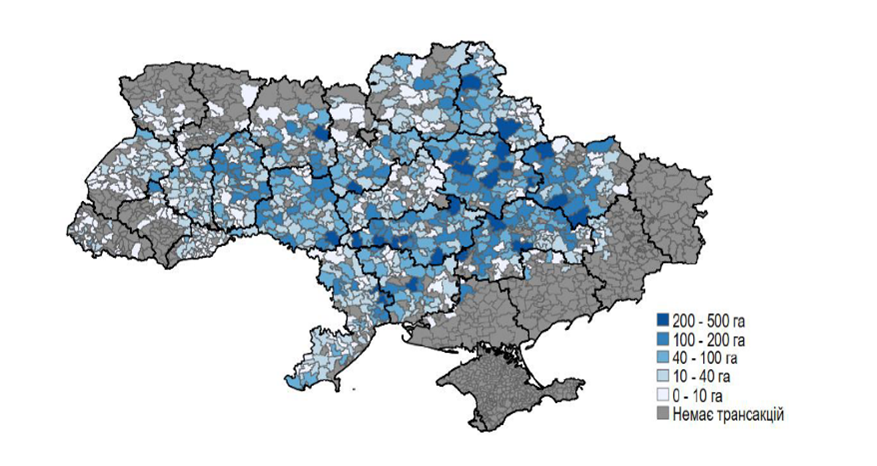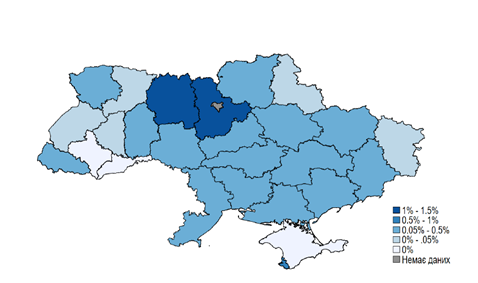Opening of the second stage of the land market for legal entities in Ukraine: Thoughts and risks
Operations for the lease or sale of agricultural land are ongoing processes that allow for agricultural activity. Small farmers (up to 200 hectares), large agricultural holdings (hundreds of thousands of hectares), and everyone in between form a land bank based on leased or private land plots. From 2021, the moratorium on the sale of agricultural land for individuals was lifted, and from the beginning of 2024, the second stage of opening the land market began, with Ukrainian legal entities also able to buy it. We will take a closer look at the main results, opinions and risks that may arise from the opening of the second stage of the land market.
Land market in Ukraine
During independence, Ukraine went through a difficult path of economic reforms from a command-administrative system with state ownership of land and property to market relations. An important component of these reforms is introducing of the agricultural land market in Ukraine. We have already written more about the period of reforming land relations in Ukraine.
On 31 March 2020, the Verkhovna Rada adopted the Law of Ukraine “On Amendments to Certain Legislative Acts of Ukraine Regarding Conditions of Transfer of Agricultural Land.” From 1 July 2021 to 2024, only individuals — citizens of Ukraine — had the right to purchase agricultural land. The maximum size of the land bank is 100 hectares per person (this is the first stage of opening the land market).
From 1 January 2024, Ukrainian legal entities will be able to purchase agricultural land with a limit of up to 10,000 hectares per person (the second stage of opening the land market). Foreigners will be able to buy Ukrainian agricultural land only after the relevant decision is passed in a nationwide referendum.
What changed after the opening of the first stage?
According to the Ministry of Agrarian Policy and Food of Ukraine, by 2023, more than 142,900 transactions were carried out on almost 322,200 hectares of agricultural land — an area almost four times the size of Kyiv.
According to the report “The Ukrainian market for the sale of agricultural land during Russia’s war against Ukraine,” during the full-scale invasion, market liberalization continued, in particular:
- Law 2698-IX dated 19 October 2022 provided for the possibility of land users purchasing state and communal land plots that were in permanent use at the price of the normative monetary assessment (NMA).
- Law 3065-IX dated 2 May 2023 simplified transactions with small plots for personal peasant farms and plots for horticulture, cancelling expensive notary checks for buyers.
Overall, from 1 July 2021 to 1 July 2023, about 0.81% of all agricultural land was traded (appr. 341 thousand ha).

Image 1. Spatial distribution of land plots sold for commercial agricultural production in the first half of 2023 (Source: https://apd-ukraine.de/images/2023/BVVG/Sales_market/sales_market_ukr_fin_cor.pdf)
The functioning of the land market and the price of land plots are influenced by many factors, in particular, the quality and characteristics of the soil, the location of the plot, proximity or remoteness to the front-line territories, etc. Before the full-scale invasion of Russian troops, Kharkiv, Kirovohrad, Cherkasy, Kyiv and Chernihiv regions were the leaders in land sales. Due to the proximity of hostilities, and also because the registers are disabled in some regions, these lands fell out of the priority areas for buying and selling. Today, the leaders in the sale of land plots are Vinnytsia, Lviv, Khmelnytskyi, Ternopil and Sumy regions.
One of the positive aspects of the opening of the first stage of the land market, highlighted by the Ministry of Agrarian Policy, is that the land market stimulated the development of horticulture in Ukraine:
“Before the beginning of the land reform, on average, up to 1,000 hectares of new gardens were registered per year. For this year (that is, 2023), 2.5 thousand hectares have already been registered,” says the Ministry of Agrarian Policy.
With the beginning of the land reform, farmers began to invest more and more in perennial plantations (for example, gardens). Since the lease is limited in time, people did not risk investing in such long-term projects. Ukrainians can feel more secure now that they own land.
How the land market affected land concentration [1]
The authors of the already mentioned report found certain trends in the concentration of land among individuals and legal entities in the first year after the launch of the land market. However, during 2023, land deconcentration processes were recorded, i.e. the reduction of the land bank, mainly among individuals, but also among some enterprises. This may be related to the difficult economic situation in which farmers found themselves due to the full-scale invasion of Russia on the territory of Ukraine.

Image 2. Shares of agricultural land owned by legal entities with an area of more than 100 hectares (Source: https://apd-ukraine.de/images/2023/BVVG/Sales_market/sales_market_ukr_fin_cor.pdf)
It is worth noting that although the concentration of land in ownership is not so large-scale (individuals — 20 hectares, enterprises — more than 100 hectares), more popular among large agricultural holdings is the lease of agricultural land, which was not covered by the moratorium. And in this case, the concentration of land is measured not in 20 hectares or more than 100 hectares, but in tens or even hundreds of thousands of hectares. Besides, the concentration of a significant percentage of land in the same hands within one community can be one of the most problematic forms of land concentration. This may pose a risk to economic competition, small and medium-sized farms’ access to land, and the provision of environmental and social components at the community level.
What is the position of farmers and authorities regarding the opening of the second stage?
In general, both the state authorities and the majority of business associations and large companies were and are supporters of the further opening of the land market, arguing that there are no valid reasons to postpone the start of the second stage. On the contrary, the next step will show the world and international partners that Ukraine does not stop at reforms and is open to investments.
At the same time, representatives of small and medium-sized farmers advocated postponing the second stage of the land market. They believe, this will further limit the access to land of small and medium-sized farmers, who are currently operating on the edge of survival, because large agricultural holdings have much more financial and human resources.
In particular, within the framework of the International Forum for the Protection of Peasants’ Rights “Small producers on guard of food security: The UN Declaration on the Rights of Peasants and Other People Working in Rural Areas” was issued by the Association of Farmers and Private Landowners of Ukraine (AFZU) together with the Ukrainian Rural Development Network Resolution, calling for the second stage to be postponed for the duration of martial law and five post-war years. They also emphasized it was necessary to immediately stop the over-concentration of agricultural land in the hands of individuals and interested groups with private property rights, as well as to oppose land grabbing.
Representatives of the All-Ukrainian Agrarian Council (VAR) launched an electronic petition “Protect the Ukrainian countryside — postpone the increase of the maximum area of agricultural land for one person from 100 to 10,000 hectares until the end of the war,” which collected more than 25 thousand signatures. The President of Ukraine responded and forwarded it to the Prime Minister of Ukraine with a proposal to comprehensively process the issues raised in the electronic petition, taking into account, among other things, possible risks to food security, and to take the necessary response measures.
As of January 2024, the second phase of opening the land market has begun. It has opened access to the market for legal entities created and registered under the legislation of Ukraine, whose participants (shareholders, members) are only citizens of Ukraine and/or the state and/or territorial communities. And the area of land that can be owned increases 100 times — up to 10,000 hectares.
We will see, whether the national government took into account the opinion of small farmers about the market and access to land. At the same time, we draw attention to the fact that there is currently a huge need for targeted state support for micro and small commodity producers in rural areas, particularly farms. Besides, regardless of the opening of the land market or not, the state must ensure proper control over land use. Further land reform should promote the development of rural areas and small agrarian enterprises (primarily, farms), increase employment of the rural population, rational and effective use of land in compliance with environmental and social requirements.
We also draw your attention to the fact that EcoAction, together with the Land Matrix initiative, monitors the concentration of large tracts of agricultural land under the control of private companies. This is done as a result of acquisitions or takeovers of other companies, which negatively affects the quality of the soil, pollutes the air, surface and underground water due to the significant intensification of agriculture.
Read the original article in Ukrainian here
[1] The authors analyse the processes of land concentration with two datasets published by the State Service of Ukraine for Geodesy, Cartography and Cadastre, which contain all individual landowners with more than 20 hectares of agricultural land and all legal entities with more than 100 hectares.